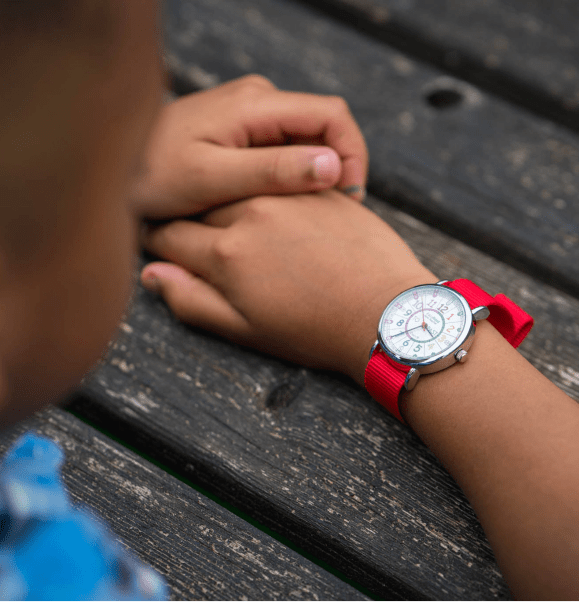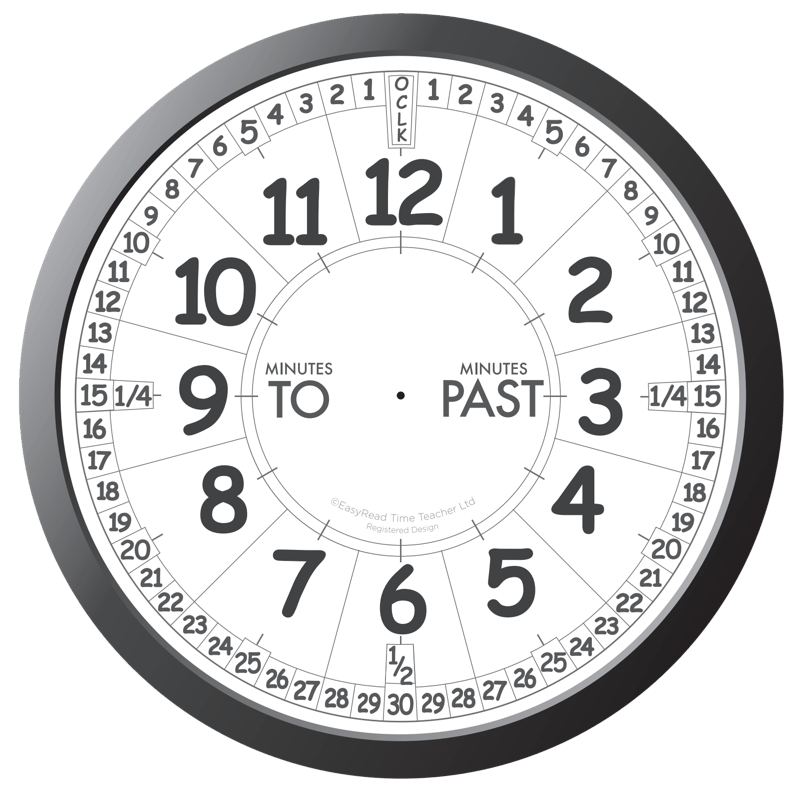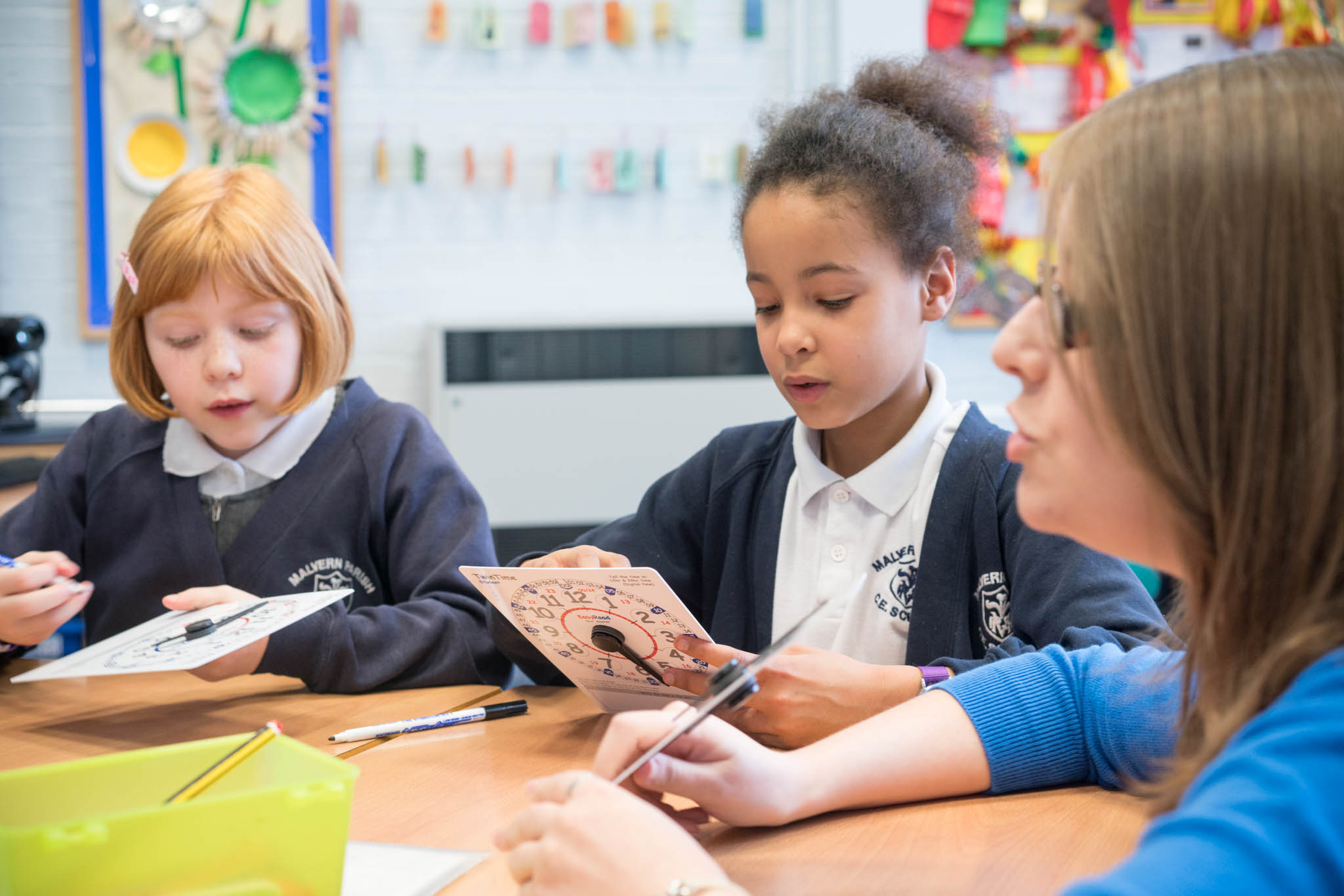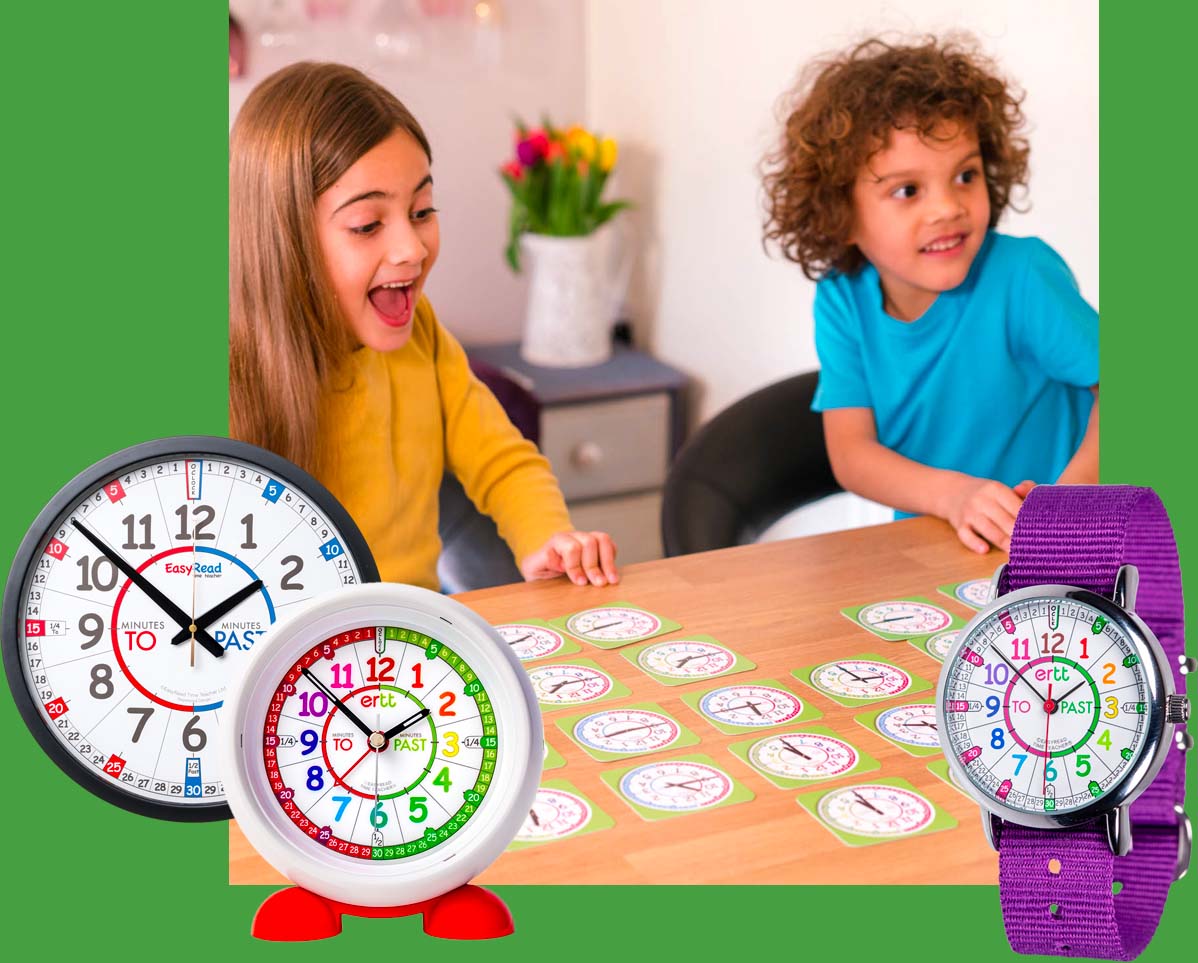How to tell the time
Why do children find it difficult to learn to tell the time?
It’s a fact that lots of children struggle to learn to tell the time on analogue clocks, sadly some never do. To find a way to help these students we had to intensely study children in the learning environment to truly understand the problem.

Watch our videos to learn:
For an adult, reading a clock is a really simple process:
-
Step 1:
With the “past & to” method, we look at the minute hand and assess the minute number value.
-
Step 2:
We judge whether it’s minutes past or minutes to.
-
Step 3:
We look at the hour hand and judge the hour value.
These 3 steps are the key to reading the time.
With the EasyRead clock children can instantly follow those 3 steps and read the time. They’re easy for a child to understand and learn:
- 1. Read the number at the end of the long hand
- 2. Say which side it’s pointing to (past or to)
- 3. Read the number at the end of the short hand
For example, say it like this: “8, “minutes to”, “2”.
It really is that simple!
Perhaps, like many of us, you tell the time another way, as if you're reading a digital clock:
-
Step 1:
With the “12/24 hour” method, we look at the hour hand and note the hour number value.
-
Step 2:
We look at the minute hand and judge the minute value.
With an EasyRead clock that has a 12/24 hour face, children can instantly follow these 2 steps and read the time:
- 1. Read the number at the end of the short hand,
- 2. Read the number at the end of the long hand.
For example, say it like this: “One”, “fifty two”.
It really is that simple!

FREE DOWNLOAD Download and start learning today, FREE!
Make your own paper EasyRead Time Teacher clock
Where do Children fall behind in learning
Working with various children over a period of time we identified 2 significant elements that cause children problems.
- In general, regular clocks and watches only display the hour numbers and some markings to indicate minutes. This is only about 20% of the information we need to know, 80% of the information we need is missing from the clock face.
- The hands can be ambiguous, they’re often nearly the same length and not pointing specifically to either the hours or the minutes. Most of the time they’re in between numbers anyway, so it’s very difficult to know which number to read.
This is very confusing for a child and it makes it hard for them to learn to tell the time.

From our customers..
"Great! I bought the watch for my son because he had problems reading the time. Within two days of him telling me the time every 3 minutes, he could read almost perfectly all the clocks, even if there were no numbers on the dial."
"Bought for my nearly 7yr old for Christmas, she loved it straight away picked up how to read it. I'm now getting constant telling of the time. Would definitely recommend."
"A must have if you’re trying to help teach your child to learn to tell the time. Lovely and comfortable watch. My child loves it and it has made my life a lot easier to teach and explain in telling the time."
About our design and why it works..
We designed a clock face that carries all the information we need to tell the time; but this still didn’t provide a sure-fire solution. We needed to help the child know which numbers to read at any point in time.
We realised that if we enclosed every number on the face in an individual box we could tailor the length of the hands so that the tips clearly indicated specific numbers . Now we have a clock that shows all the information we need and hands that tell us exactly which numbers to read.
This completely removes the mystery surrounding analogue clocks and watches.
Students no longer need to memorise all the missing information before they can tell the time, they simply need to read the numbers that the hands tells them, in the right order.
Find out more.